Teaching Statement
My mission as an educator is to foster authentic and inclusive conversations and offer support and guidance as we work together to build a community of active learning. Though my formal education has been focused on technical and design skills, I have taken on a number of less formal courses and certificates to work to refine my teaching and course development process. As a life-long learner, I strive to make every iteration of my classes better than the previous and am always on the hunt for new knowledge and ideas that can help me improve.
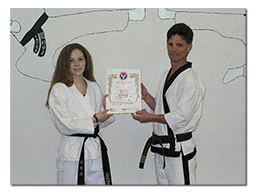 My first opportunity to teach came when I got my Black Belt in Tae Kwon Do at 15 and became an assistant instructor for the younger student classes. Though I was quite young myself, this experience resonated with me and the desire to help others succeed became one of my core pillars.
My first opportunity to teach came when I got my Black Belt in Tae Kwon Do at 15 and became an assistant instructor for the younger student classes. Though I was quite young myself, this experience resonated with me and the desire to help others succeed became one of my core pillars.
Throughout high school and college, mentorship and tutoring opportunities became my primary source of income. I tutored math classes during all four years of my bachelor’s degree, ranging from algebra and business math to calculus and differential equations.
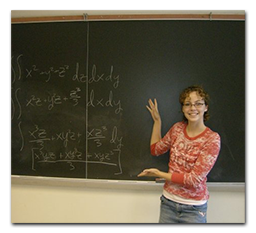 I remember several times being asked if I want to be a teacher after college, and unfortunately my instinct was “no” because I thought these questions were rooted in sexism...what else could a female student do with a math degree?
I remember several times being asked if I want to be a teacher after college, and unfortunately my instinct was “no” because I thought these questions were rooted in sexism...what else could a female student do with a math degree?
Ultimately I changed to a computer science major and went to work as a multimedia developer at a studio that designed software for corporate training. Eventually my path led me to Carnegie Mellon for grad school, where I took a Teaching Assistantship in 3D modeling and several internships working on educational games.
The master’s degree and teaching experience led to an opportunity as an adjunct lecturer teaching evening classes (while working full time at a AAA game studio). After a few years of part time teaching, I landed my first full time teaching position as Assistant Professor of Practice position at the University of Texas in Jan 2018 in the Department of Arts and Entertainment Technologies.
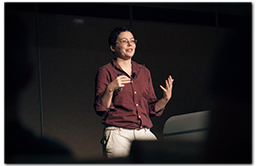 In this role I taught several classes each year, often including one or two new classes that I get to design from scratch. I enjoy the curriculum development aspect, which led me to take on the role of chair of the Curriculum Committee for my department.
In this role I taught several classes each year, often including one or two new classes that I get to design from scratch. I enjoy the curriculum development aspect, which led me to take on the role of chair of the Curriculum Committee for my department.
I believe that students are the central and most important part of education. My focus in my classes is designing a student-centered experience, with less emphasis on lecturing and more emphasis on engaging activities and projects.
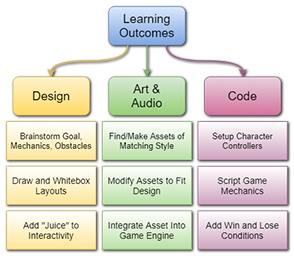 My classes have gradually been evolving to the “flipped classroom” model. I pre-record short lectures and technical demonstrations which my students follow outside of class time, and we use our synchronous meetings for discussions, small group collaboration, and opportunities for students to share their work with the class and ask questions.
My classes have gradually been evolving to the “flipped classroom” model. I pre-record short lectures and technical demonstrations which my students follow outside of class time, and we use our synchronous meetings for discussions, small group collaboration, and opportunities for students to share their work with the class and ask questions.
All of my classes involve at least two large projects (sometimes as many as 8). These projects allow students to work on interdisciplinary teams and build on their skills from the class to create portfolio pieces. We also do project critiques where they get feedback not just from me but also from their peers.
Every project has a goal (ex. create a fully playable game level) and several constraints (level must include a locked door, collectables, and a damage trap), but still leaves room for student creativity so they can really make the projects their own and show their passion.
I've also had some excellent opportunities to collaborate with other faculty. I've co-taught two classes, once with a professor with decades more experience than me (which was a phenomenal learning opportunity). In 2019 I was involved with an Escape Room project which spanned several classes including mine. My students created the digital prototypes of puzzles, which other classes iterated on and turned into a full physical experience.
Courses Taught
Asst. Professor of Instruction, Dept. of Computer Science, UT Austin, Jan 2022 - Present
- C S 303E Elements of Computers and Programming
- C S 329E Elements of Mobile Computing
- C S 371M Mobile Computing
- C S 378 VR Development for Games
Asst. Professor of Practice, Dept. of Arts and Entertainment Tech, UT Austin, Jan 2018 - Jan 2022
- AET 339 Augmented and Virtual Reality for Games [Syllabus]
- AET 310 Foundations of Creative Coding (required for all majors) [Syllabus]
- AET 339 / AET 334C Level Design [Syllabus]
- AET 333K Video Game Prototyping [Syllabus]
- AET 339 Virtual Reality for Games / AET 335K Virtual Reality for Video Games [Syllabus]
- AET 346 Game Scripting and Modding / AET 334F Video Game Scripting I [Syllabus]
- AET 334L User Interface and User Experience for Video Games [Syllabus]
- AET 374 Independent Study
- BDP 320L Bridging Disciplines Connecting Research Experience
- AET 139 / AET 170 Research Methods / Proseminar (required for Honor students) [Syllabus]
- AET 378H Honors Thesis (required for Honor students) [Syllabus]
As Lecturer at the Art Institute of Austin, Oct 2015 - Mar 2018
- GAD 300 Level Design
- GAD 315 Programming for Artists
- GAD 320 Advanced Level Design
- GAD 325 Game Prototyping
- GAD 330 Project Management for Game Art and Design
- GAD 340 Advanced Game Prototyping
- GAD 345 Interface Design
- GAD 350 Game Animation
- CA 340 Animation Dynamic Systems
As Course Author at Pluralsight, 2017 - Present
- Game Prototyping in Unity
- Unity VR Fundamentals
- Prototyping Game Systems for Swords and Shovels
- Designing for Virtual Reality
Student Work
My students create amazing work that inspires me to keep teaching and to keep innovating on my courses. Here is a selection of some of the unique and impressive creations my students have made.
Virtual Reality for Games
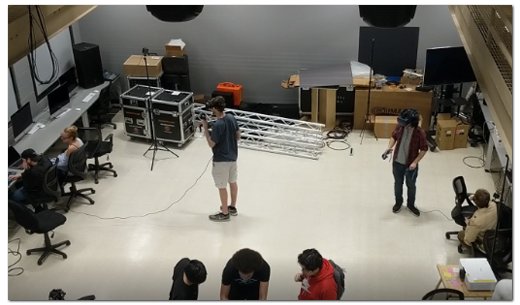
In the spring of 2020 my VR class moved online in the middle of the semester due to the pandemic. During the first half of the semester we had dabbled with a variety of VR hardware, making prototypes for the Daydream, Oculus Quest, and HTC Vive.
The plan was for the students to choose one of those to use for their larger final project. We managed to weather the transition by shifting the final projects to instead use the Google Cardboard. We were fortunate that every student had a smartphone, so they were able to build their games to their own device.
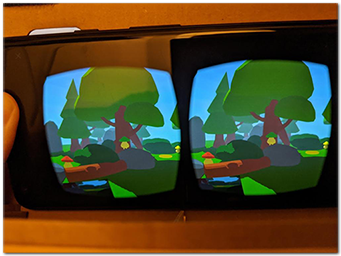
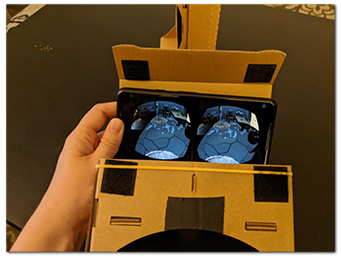
I coordinated to have the department mail a Cardboard viewer to each student at their home address, because they were not allowed to return to campus.
At the end of the semester I was interviewed about how my students were able to continue their project work remotely, and the full interview is published on the College of Fine Arts website.
When I taught this course back in the Spring 2019, my class got an amazing opportunity. A colleague of mine who worked for HTC Vive was visiting Austin and asked to come see my class. He was so impressed by my students' work that he invited me to show their projects at the Game Developer's Conference that year.
Bridging Disciplines Creative Project
The Bridging Disciplines program at UT allows students in different majors to pursue meaningful projects and coursework outside their primary field to gain experience with cross-disciplinary work. I have mentored several creative projects from students outside of AET working through the Bridging Disciplines certificate in Digital Art and Media.

In the Spring of 2019 I mentored Ali Vanderhider for her BDP project Between the Cracks, in which Ali took pieces of physical artwork she had created for her Studio Art major, and turned them into a digital experience of a game.
Ali documented her progress in a weekly blog and published the finished game on her store page.
Game Prototyping
In Game Prototyping, students experience the rapid prototyping and iteration process that is common to the early phase of game development. Students create a variety of projects including both physical and digital, and for the digital prototypes they have a chance to try out different tools they may be unfamiliar with.

One of the physical projects we do in this class is the Marshmallow Challenge, where teams of 3-4 have 15 minutes to build a tower using spaghetti and tape. Before the timer runs out, they must place a marshmallow on top, and the tallest free-standing tower at the end is the winner.

Students also create paper prototypes as a way to convey a game concept before digital development begins.

The rapid prototype process also involves a lot of different brainstorming activities, including putting ideas up on whiteboards around the room.
In the Fall of 2019, my prototyping students had the opportunity to collaborate with several other classes for the creation of a full-scale Escape Room. My students created early prototypes of the puzzles to test and iterate before they were integrated to the full project by a Fabrication class.
Curriculum Development
In my very first semester at UT while I was still an adjunct lecturer, I got involved with the curriculum planning for future game design course offerings. I met with the other game design faculty and we discussed potential careers our students might pursue and what types of courses would best set them up for success.
This curriculum planning evolved to include structuring course sequences and prerequisites, and coordinating how the course would fit into a 4-year degree timeline.

To contribute to the direction of the curriculum development, I made a "paper prototype" much like my students might make for class, and used it as a way to plan and test different options for our course sequence structure. This activity helped us brainstorm and develop a common understanding of how our courses would work together.
Around that time the department was also working on a restructuring of the degree, and I was involved with the discussion and voting of the new degree plan into legislation.
As part of the curriculum revisions, I was tasked with a full redesign of the Foundations of Creative Coding course, which is the only technical course required for all of our majors. The redesign needed buy-in from all faculty since it is a core foundations course with outcomes that affected all subsequent courses.
I also collected and submitted documentation to get course flags on several of our courses, including flags for Quantitative Reasoning, Independent Inquiry, and Writing.
Beginning in 2019, I stepped into the role of chair of the Curriculum Committee for my department. The purpose of the Curriculum Committee is to discuss revisions to the degree plan and present to the full faculty, introduce certificates, and coordinate course outcomes particularly for the Foundations courses.
On a more granular level, I have also been evolving my approach to designing individual courses over the years. One thing I have found particularly useful to the types of classes I teach is to record tutorials of the technical and design approach to each topic. This gives my students the opportunity to work at their own pace rather than trying to keep up with a synchronous demo. It also means students can go back and revisit the material later in the semester.
My suite of tutorials has been growing, and you can find them all on my Youtube channel: youtube.com/AstireGames
Instructional Design and Gamification
Even before I began teaching, my work brought me into the field of Instructional Design. My first job after college was as a Junior Multimedia Developer at Five Star Development. There I worked on corporate training apps and websites which we designed for fortune 500 companies.
When I returned to school for my masters degree, I took a 3D Art Internship on The Alice Project, which is a game that teaches kids how to code through entertaining 3D animated sequences.
I also worked as a Special Operations Intern at Schell Games. Though my tasks there were mainly in office management, I was surrounded and inspired by the development and testing of educational games and simulations.
Next I worked as a Design Intern at Etcetera Edutainment, and there I was involved in the design and testing of a Healthcare training game, which taught patients how to care for themselves after heart surgery.
As a Technical Designer at Planet3, I designed and built prototypes for STEM education games for middle and high school students. I worked collaboratively with SMEs and Instructional Designers to gamify the learning experience.
From 2016 to 2018 I consulted for Fabulingua, Spanish learning app for kids. I helped create the first interactive stories for the iPad, which involved kids turning the pages and having the story read to them in Spanish and English, playing with the characters on each page, and then rereading the story where they got to read aloud themselves and the app recorded it and played it back for them.